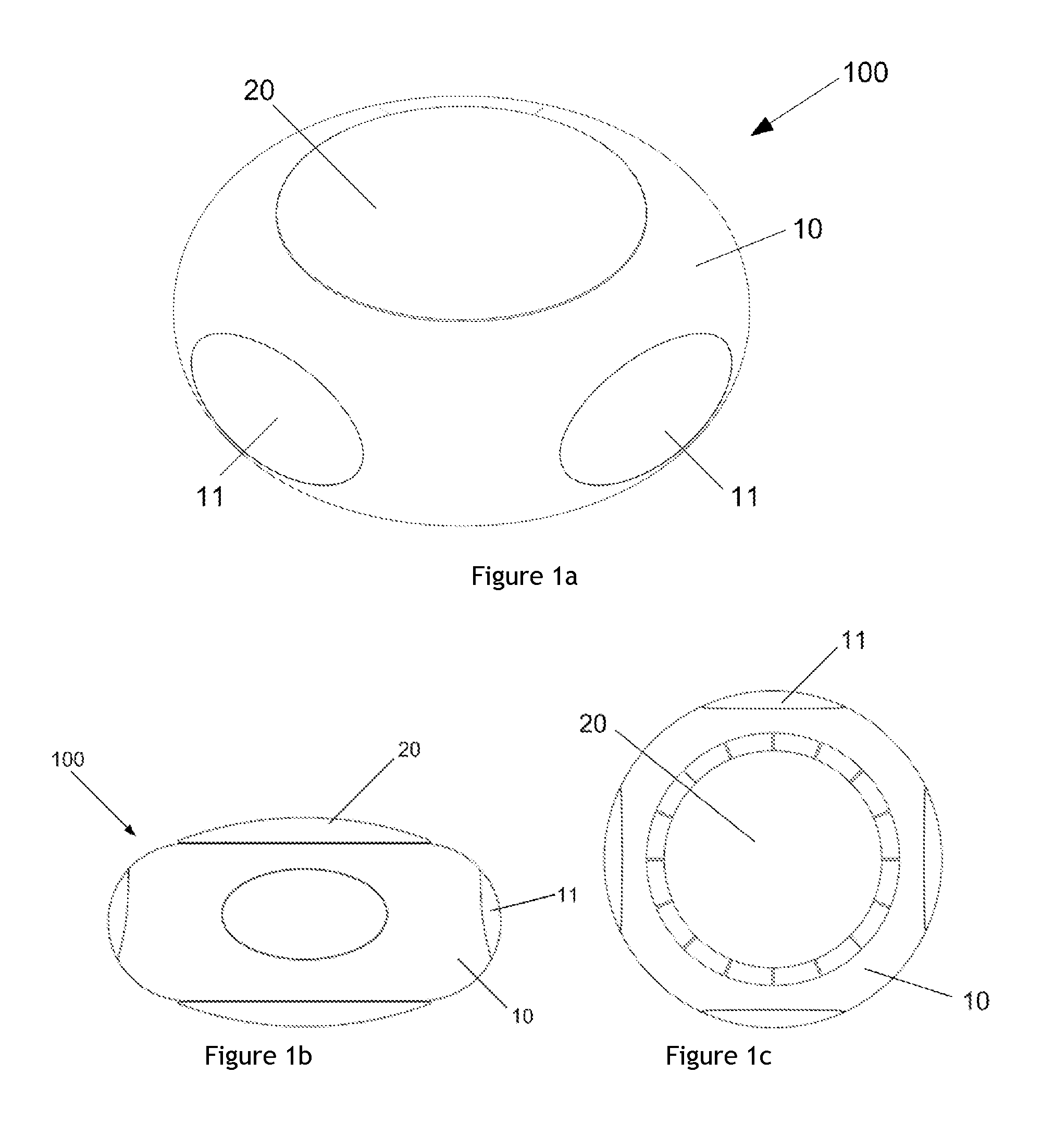Pod for space or near-space flights
a space or near-space flight technology, applied in the field of human flight, can solve the problems of space tourists further suffering discomfort, sub-orbital flights are still projected to be very costly, and the demand for space tourism will be very small at these steep prices, so as to achieve less sudden movements and shocks
- Summary
- Abstract
- Description
- Claims
- Application Information
AI Technical Summary
Benefits of technology
Problems solved by technology
Method used
Image
Examples
Embodiment Construction
[0031]FIGS. 1a-1f illustrate embodiments of a first type of pod according to the present invention. A pod 100 according to the present invention comprises a pressurized body 10 for hosting passengers (“space tourists” and optionally pilots and further crew). Said pressurized body is provided with a plurality of windows 11. The pressurized body 10 in this embodiment is formed by a toroid (or “donut” shape), more clearly illustrated in FIGS. 1d and 1e.
[0032]The toroid is formed around a central axis of revolution 7. In the central opening, indicated with reference sign 5 in FIG. 1e, the non-pressurized body 20 may be located.
[0033]The windows 11 have advantageously been provided on the external surface 10b of the pressurized body (the part of the surface of the pressurized body that faces away from the central axis 7). The stress concentrations around the windows 11 will be relatively small, since the prevailing stresses in the external surface 10b are smaller than in the internal su...
PUM
 Login to View More
Login to View More Abstract
Description
Claims
Application Information
 Login to View More
Login to View More - R&D
- Intellectual Property
- Life Sciences
- Materials
- Tech Scout
- Unparalleled Data Quality
- Higher Quality Content
- 60% Fewer Hallucinations
Browse by: Latest US Patents, China's latest patents, Technical Efficacy Thesaurus, Application Domain, Technology Topic, Popular Technical Reports.
© 2025 PatSnap. All rights reserved.Legal|Privacy policy|Modern Slavery Act Transparency Statement|Sitemap|About US| Contact US: help@patsnap.com



